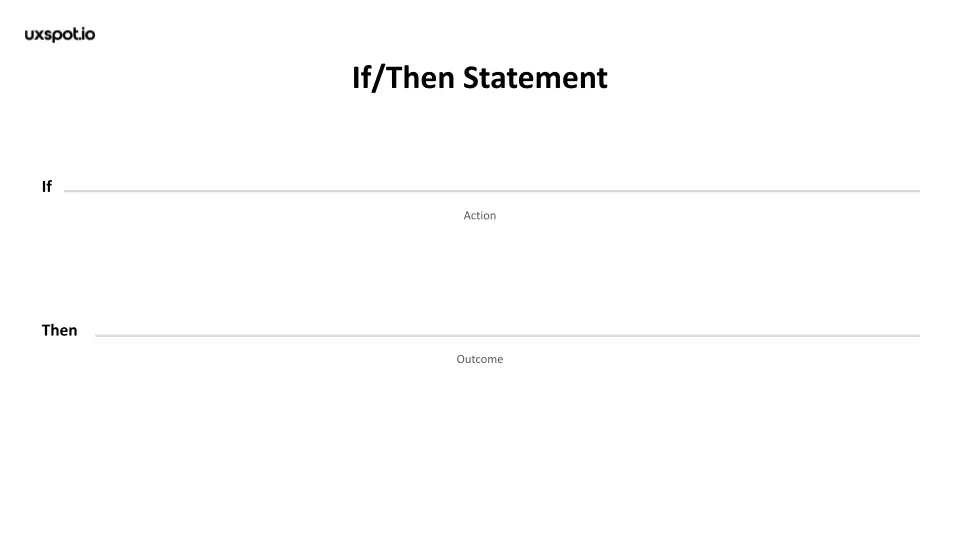Introduction to hypothesis statements

Brainstorming solutions is similar to making a hypothesis or an educated guess about how to solve the problem.
In UX design, we write down possible solutions to the problem as hypothesis statements. A good hypothesis statement requires more effort than just a guess. In particular, your hypothesis statement may start with a question that can be further explored through background research.
How do you write hypothesis statements? Unlike problem statements, there's no standard formula for writing hypothesis statements. For starters, let's try what's called an if-then statement.
It looks like this: If (name an action), then (name an outcome).
Hypothesis statements don't have a standard formula. Instead of an if-then statement, you can formulate this hypothesis statement in a more flexible way.
Get Canvas-
keywords
- #If
- #Then
Essential characteristics of a hypothesis statement
To formulate a promising hypothesis, ask yourself the following questions:
Is the language clear and purposeful?
What is the relationship between your hypothesis and your research topic?
Is your hypothesis testable? If so, how?
What possible explanations would you like to explore?
You may need to come up with more than one hypothesis for a problem. That's okay! There will always be multiple solutions to your users' problems. Your job is to use your creativity and problem-solving skills to decide which solutions are best for each user you are designing for.
-
keywords
- #ClearLanguage
- #HypothesisVSResearchTopic
- #Testable
- #PossibleExplanations